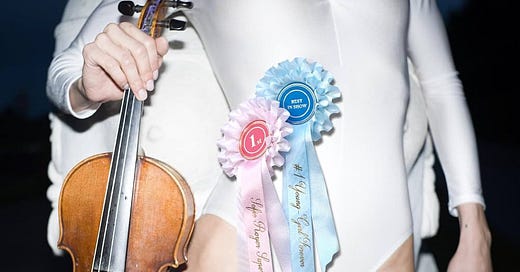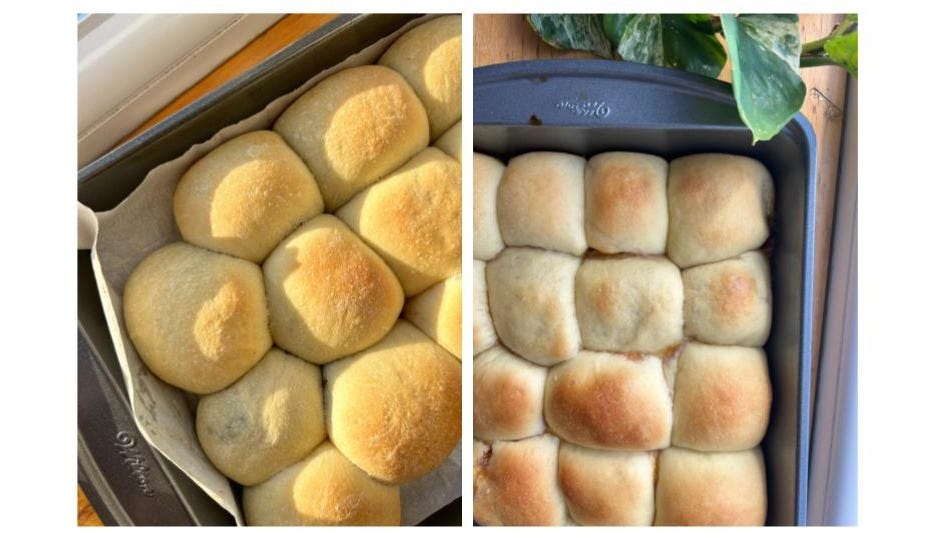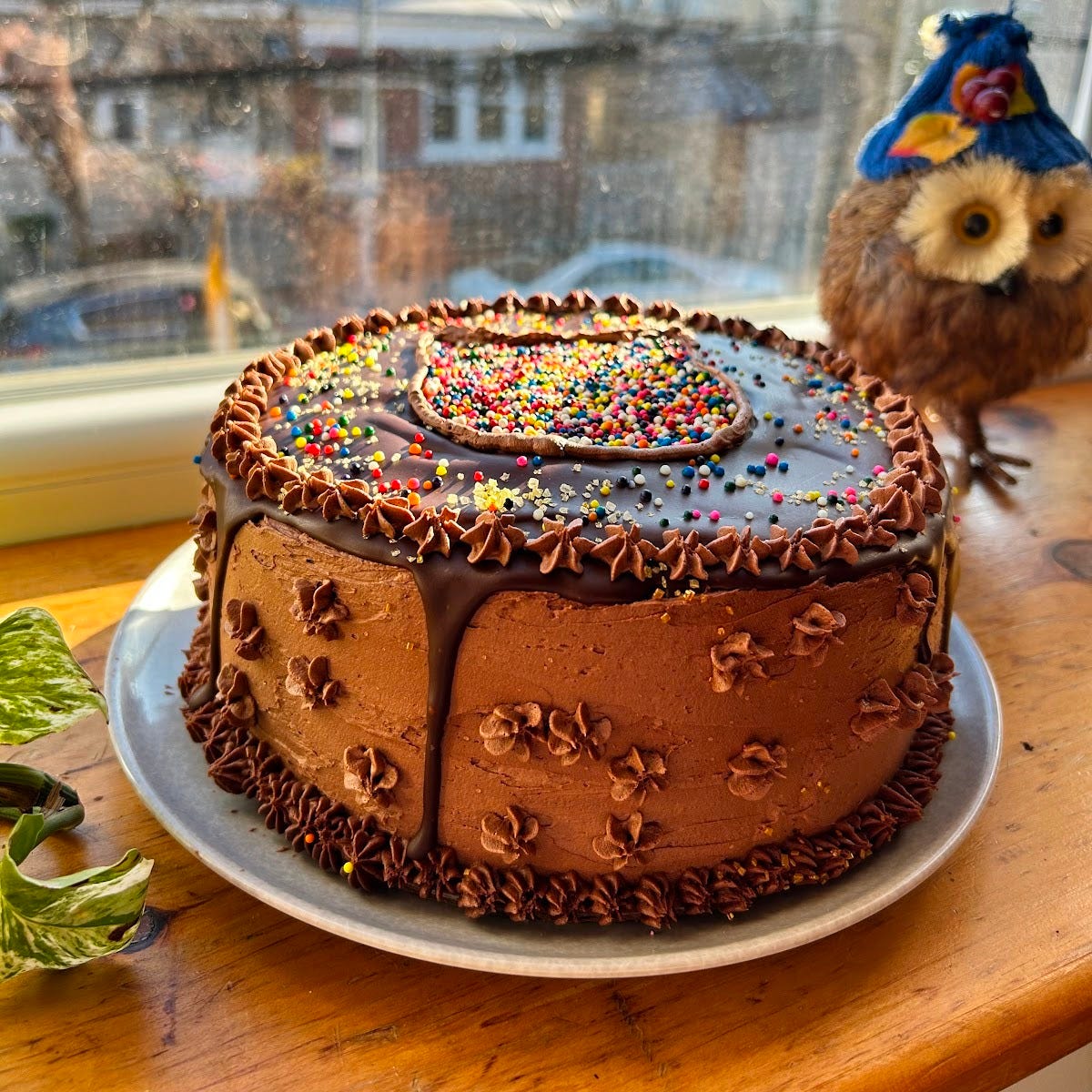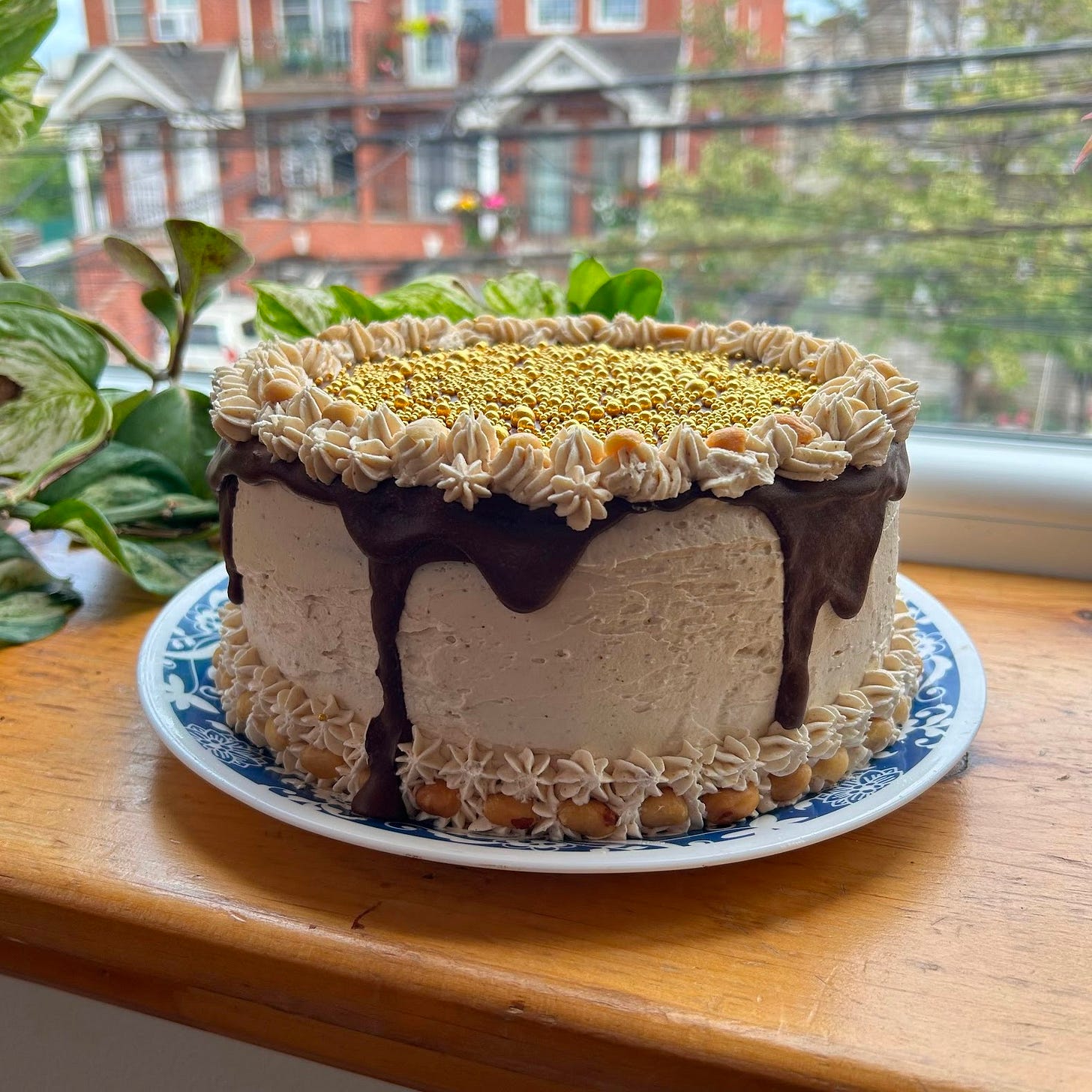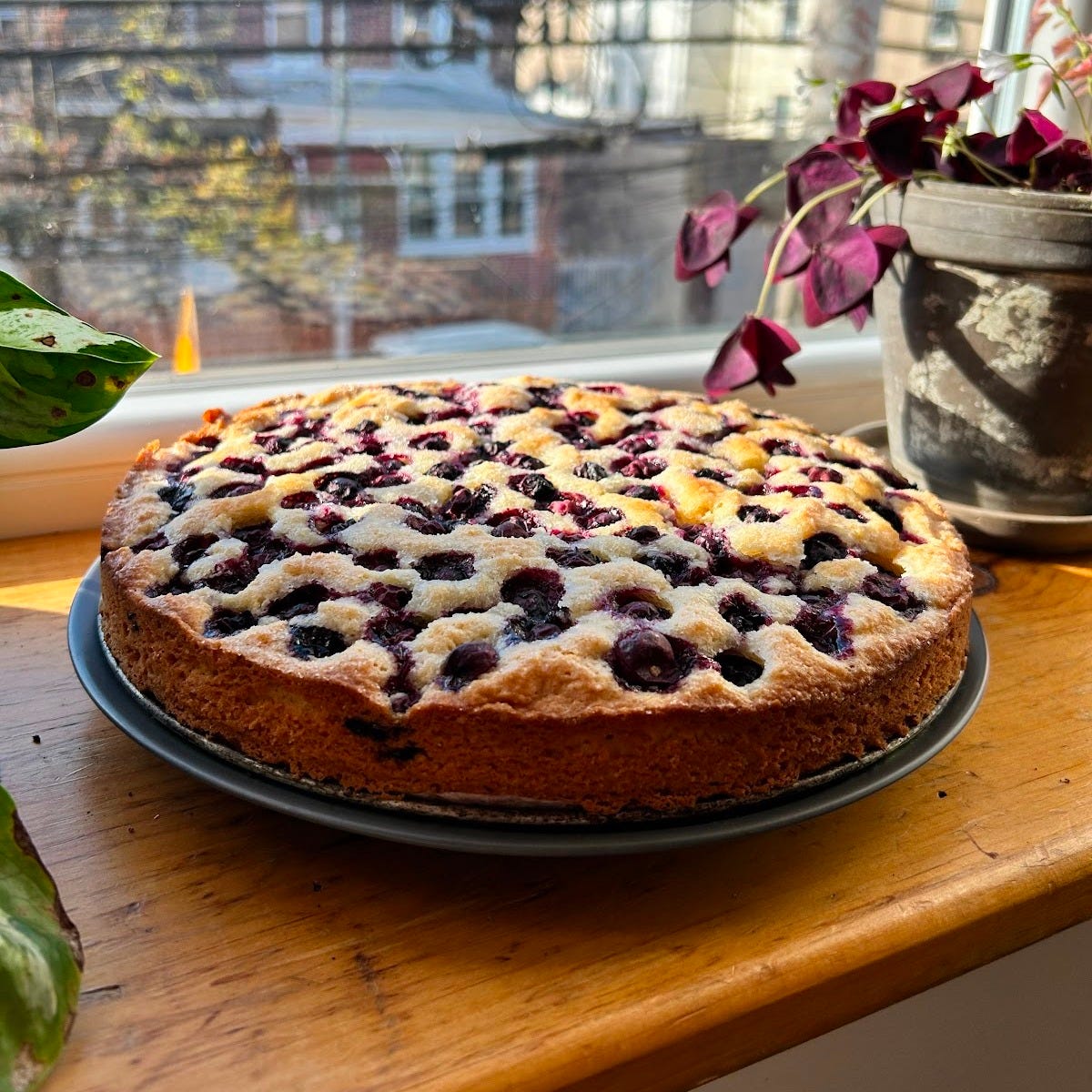All opinions expressed here are strictly my own. Find me on X, Instagram and TikTok. I’d also love it if you shared this letter with a friend.
MEDIA/DIET DECEMBER 2024
Thanks for reading my newsletter! This is a monthly edition of Ultracold where I share informal thoughts on media and food that I have consumed recently. A slightly more polished essay will run on the 23th, pegged to December being my birthday month.
MEDIA
My girlhood was mostly marked with a feeling of deficiency. There were no slumber parties with pillow fights, no whispered secrets about how to kiss, no sharing of first lacy bras or putting on makeup with girlfriends. I did as badly with boys - I found them too scary to be objects of my desire, and they saw me as someone who could do their homework. At best, I was “one of the guys,” an ironic foreshadowing of my future relationship with gender, which, at the time, felt like a slight. The fantasy of heterosexual feminine coming of age that popular culture sold me was always looming over me, but I could not find the one weird trick for actually living it.
But adults did see me as a girl, and as such I had to be guarded an controlled. I was told how to wear my hair and shave my legs, how to sit, stand and speak, and everything about me was imbued with a moral value whether it be discussing politics or buying tampons. I may have failed at the more romanticized parts of girlhood in comparison to my peers, but I don’t imagine many of us who were teenagers in the mid-aughts Croatia were spared from this aspect of it.
As I’ve become more confident in my identity as a nonbinary person in the last several years I have been able to let go of some of the guilt and shame around my girlhood. But the issue of what girlhood itself is, and who it is for, continues to feel pointed. I am still fascinated by it as a cultural concept, one that invites both discourse among academics and the terminally online1 and ample interest from marketing executives.
Sofie Royer’s Young-Girl Forever is a record about girlhood that takes the concept on earnestly, while also engaging with how it is theorized.
“I almost feel permanently trapped in a coming of age, that’s really the sentiment that I’m trying to convey, and I’m like, “when will it end?” When will that precipice of this imaginary threshold, that I believe to be there, when is that there?”
she says in one interview. This feels both very personal and very true. But while many more mainstream pop stars sing about the female coming of age in a way that gives their audience a narrative arc they can either love or hate, Royer gives her listeners the “Young-Girl.”
This archetype was first introduced by the anonymous French anarchist collective and publishing project Tiqqun in 1999. They posited the “Young-Girl” as primarily defined through a relationship with consumerism rather than strictly by gender. As
explores here and here, Tiqqun is prescient in formulating the Young-Girl in an era before social media, fast fashion hauls and microtrends as “the figure of the total and sovereign consumer,” and “the offensive by which market domination has responded” to a crisis in a traditional distribution of gender roles.As we are currently witnessing a swing towards more conservatism and more adherence to white heteropatriarchal values in fashion and pop culture, it is not hard to argue that Tiqqun prophesied a certain kind of conventional pretty influencer who is never not shopping at stores that feel aspirational and never shows you makeup that does not look “natural. They write:
“The Young-Girl never creates anything; All in all, she only recreates herself,”
and
“The most extreme banality of the Young-Girl is to take her/himself for an original,”
This has echoes in some of the female pop star archetypes that have made a splash in the past year, from Taylor Swift’s continued project of self-mythologizing, to JoJo Siwa claiming the invention of “gay pop,” to a thirty-something-year-old Charli xcx still singing about how confusing it is to be a girl (and the song hitting it extremely big).2
This is not to say that Tiqqun’s writing does not perversely reflect some of the traditional, conservative values that they are presumably writing against. A critique of capitalism that chooses the word “girl” for the ultimate vapid consumer archetype in itself indicates just how much “the girl” has become a universal symbol of something worth deriding. I’m not necessarily saying that everything Tiqqun write is sexist but there is a tension in their project that is more complicated than the claim that “Listen: The Young-Girl is obviously not a gendered concept.”
Royer, for her part, seems to understand that the project of the Young-Girl is in some sense empty and rotten, but she is, much more interestingly, not without sympathy for the character. She sings:
“I'm so young/ Young forever, but I'm also dying/ While I sleep, the toy in my hand ages me”
and
“Coming off the borderline/ I'll smile an empty smile /Guess I'll be hanging out for a while.”
Though she has talked about her art being autobiographical, Royer is putting on the character of the Young-Girl as much as she is, a thirty-three-year-old preformer, sort of stuck being seen as a young girl herself. Somewhere in-between these two facts, the record finds a way to be upbeat and fun and, luckily, forego the somewhat high-and-mighty tone of the text that it is referencing.
Royer is not popular enough to be a “main pop girl” contender, so she can also embrace a less produced and more retro sound, which adds texture and charm to her project. Young-Girl Forever owes a lot to the 80s. It is rich with synths, dance-friendly beats, and European references that remind me of my own girlhood in post-communist Croatia.
Keep Running (Sebastian in Dreams) and Indoor Sport are just great retro-inflected pop songs. Nichts Neues im Westen reads like a German schlager that a washed out local singer would have performed on a terrace of a mediocre coastal Croatian restaurant for a crowd of bored German tourists at some point twenty years ago - and I think Royer modulates her voice to play up that sort of joke. The bells at the end of I Forget (I’m So Young) feel very campy combined with the electronic drumbeat, and like something you’d have danced to in a European discotheque around the same time.
She also covers Sage comme une image, by the Portuguese-Belgian 1980s pop star Lio which again seems to have perfectly suited lyrics (don't think I'm not old enough yet\It's nothing more than a matter of makeup\ You might take the rouge off my lips\I don't touch anyone and no one touches me\ I'm as good as gold, as good as gold) and a delightful disco sound.
What drew me in the most about Royer’s record, other than the fact that one of its opening lines is “I wanna be an ordinary guy,” which is both brilliantly funny and relatable to me, is that it feels deliberate. She is a classically trained violinist and a multi-hyphenate who is not a stranger to both doing things on a shoestring budget and playing with concepts - and does so it with lots of character. Her girlhood is painful and it is haunting and it is vapid and plastic, but it is also genuine so she can be upbeat while dissecting it.
At the end of it all, Royer also seems to understand that there is a limited amount of virtue in thinking that you can preserve any level of perfect purity, be it in how you reject capitalism or how you meet societal expectations, when facing the relentlessness of the world. She sings:
“And I′ll leave my worries\In a hurry, I'll be gone\On to the next one, don't even matter\Cause it′s lights out baby, entropy!”
DIET
The stretch from mid-November to the end of December is when I usually bake the most and, so far, this year hasn’t been an exception. My partner and I hosted a great Friendsgiving together with my best friend, my in-laws threw another holiday party a few days later, and I found time for a cake-commission or two amidst all of that too. Throughout, I was busy and nervous, but also took great joy in spending time fussing over the stove and the oven.
That sentiment exemplifies my whole year as far as baking goes: I baked more than ever and almost always it was both interspersed with other tasks and a great respite from them. I got into a steady routine of making bread, I challenged myself to do more pop-ups and bake sales in the neighborhood, which is still relatively new to me, and I chatted with a lot of strangers over slices of cake. I am mostly an introvert, and not exactly without my awkward moments, so the latter feels like the most triumphant of all of my 2024 baking achievements. In the next year, I hope that baking will continue to be my entry point into new friendships, and a way to continue deepening the friendships that I am already part of.
In the spirit of end of year lists, here is a brief summary of my year in baking.
1. This was a year of returning to bread-baking for me and though I have kept it rather simple, I have been really enjoying both the practice of tending to the dough and getting to eat many bread-and-soup or bread-and-spread meals. I went through a really severe sourdough phase in graduate school, but the pandemic and my move to New York disrupted that seemingly indefinitely. Then, earlier this year, I realized that L’Imprimerie, a Bushwick bakery with a nice assortment of vegan croissants, sold little containers of sourdough starter that you could just grab at checkout. Mouth full of laminated pastry, I impulsively did exactly that. Now, I make bread almost every Wednesday. I use this recipe from The Perfect Loaf and bread flour from King Arthur, sometimes baking the bread the same day, sometimes giving it a 10-12 hour rest in the fridge. My shaping technique is sort of horrendous, as it has always been, but the flavor of fresh bread has not disappointed me yet.
2. I am seemingly always writing about my nonnas’ yeasted buns filled with jam, and you will rarely find me at a bake sale without them. They were certainly one of my staples in 2024. I use a recipe that I first wrote down while I was in graduate school, and every year I think I will re-think it and make the buns more fatty or more puffy or more golden. Then, I never get around to it - the buns have simply been so reliable and so nostalgic for me for too long.
Here is what I wrote about the origin of these buns earlier this year:
Both of my grandmothers, my two nonnas have made these buns throughout my childhood. We’ve used different words for them, sometimes calling them “buhtlići” after the Austrian buchteln, sometimes “saće” which means honeycomb, the shape they sort of make if you cram enough of them into a round cake pan. They call for a simple yeasted dough, somewhere in-between the fluffy, spongy American cinnamon roll and the more crunchy and textured Danish cardamom bun. I have never actually asked either of my nonnas for the recipe and have worked off of what I could glean on the Internet, and what felt right when compared to my memories. Inevitably, my version of the buns is distinctly mine, but I do not mourn that as there is something sweet about letting that childhood memory stand uncontested, committed to legend like deep brown bready hilltops covered in a dusting of powdered sugar finer than any snow.
I like them best when they rise in the fridge, overnight, after being shaped and filled, and my favorite filling is thick plum butter. But the recipe is fairly flexible and forgiving so they can also be made in a single day, and filled with whatever jam or paste you personally love. Here is an old recipe sketch.
3. Finally, I made a lot of cakes this year and a small selection is pictured below.
Have I become a better cake baker this year? I hope that I have, but I also hope that 2025 will find me taking more chances on more experiments, and that I will expand my flavor palate without reservations. Maybe I’ll even conquer my fear of aquafaba.
This carrot cake ended up being featured in New Scientist’s now defunct cooking column when the regular writer wasn’t available to fill the space reserved for it in print. I wish I had taken better photos of it (at least featuring matching plates!) but it was really nice to get to write a recipe as part of my usual workday.
Featuring layers of vanilla cake studded with blueberries, a vanilla and berry frosting, fresh berries and a tahini glaze, this was the cake that I used to ring in 2024 in with a bunch of friends at a picture-perfect New Year’s Eve party. I try to not be superstitious, but this felt like an unambiguously good omen.
These two cakes: a cat-themed chocolate-on-chocolate combination and a chocolate and peanut butter cake in the bottom left were birthday cakes for people who were throwing parties that felt very meaningful to them and I was happy to take one thing off their plate by being in charge of dessert. This often feels like the most meaningful gift to me, not just giving folks something sweet to eat, but also freeing up some of their time as they plan and prepare everything else.
This cake was an almond flour experiment studded with plums and cherries that I ended up loving so much - it tasted like marzipan but better - that I put it into my bake sale rotation. My mom tried the first iteration during her visit to New York this summer and I have a fond memory of her cutting the still lukewarm cake late at night, several hours before she would fly home.
Certainly, I count myself among the terminally online.
To be fully transparent, I teared up a little when I first heard the remix with Lorde.

